
In this recent piece in Fortnightly Review, Peter Robinson reflects on this question and on the joint Hardy Society / STW Society weekend in Dorchester in February 2024.

In this recent piece in Fortnightly Review, Peter Robinson reflects on this question and on the joint Hardy Society / STW Society weekend in Dorchester in February 2024.
The 2024 Society AGM will take place on 11th May at 11.15 a.m.
At The Learning Room, Shire Hall, High W St, Dorchester DT1 1UY
And on Zoom: https://ucl.zoom.us/j/93791432697 Meeting ID: 937 9143 2697
All members are welcome, in person or online. Please contact the Chair, Janet Montefiore, to let her know you are coming.
AGENDA
Naming is a potent way to obscure queer people and their relationships. One way this happens is through incorrectly referring to lesbians as friends, companions, sisters, or – a cliché that is now almost exclusively used ironically – ‘gal pals’. This reduces love to friendship, and incorrectly records history.
I recently spotted an example of this on the Faber website where on Sylvia’s author page, Valentine is referred to as Sylvia’s ‘close companion’. ‘Close’, here, is being expected to do an extraordinary amount of euphemistic work, given that the pair were lovers, partners, spouses, wives (pick your term) for almost forty years. Indeed, their ashes were scattered together, and their shared gravestone is a rare material testament to early 20th century sapphic love: ‘close’ doesn’t quite cut it.
When I emailed them, Faber promptly amended this webpage, thanking me for pointing it out. They published Winter in the Air in 2022, in which the biographical note describes Valentine as Sylvia’s ‘partner’, so we can assume that ‘close companion’ was copied from an older text, or was perhaps a legacy of an older version of the site.
The page now calls Valentine Sylvia’s ‘partner… whom she lived with from 1930 until her death’. It is a small change, but one Sylvia would have wanted. In the last of the letters collected in I’ll Stand By You (1998), she wrote to Valentine, ‘our love is the one thing I can never question’; I think she wanted us to know.
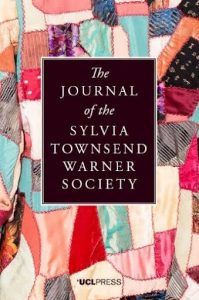
UCL Press Open Access Journals is excited to announce that The Journal of the Sylvia Townsend Warner Society has launched on a new platform; providing a more intuitive, improved navigation experience for its global readers.
The Journal of the STWS is a peer reviewed, open access journal aiming to create a wider interest in this brilliant, original and witty writer. It features scholarly articles, previously unpublished archival works by Warner, and pieces by well-known contemporary writers describing their appreciation of Warner.
The Journal also supports The Sylvia Townsend Warner Lecture series, a bi-annual event hosted at UCL, London. The series offers the opportunity to hear from acclaimed writers whose work touches on Sylvia Townsend Warner’s life and works. Previous lectures can be found on the link.
You can sign up for publishing alerts to keep abreast of calls for papers and new article releases.
The study weekend organised jointly by the Thomas Hardy Society and Sylvia Townsend Warner Society, led off on Saturday 10th Feb with a day-long mini-conference in the Learning Room of Dorchester Library (which some members may recall from the AGM we held there in 2018), attended by c. 30 people, including members from Cornwall, Lancaster, Manchester, Cambridge and Canterbury (Judith Bond, Gill Davies, Hannah Berry, Maud Ellmann and John Wilkinson, and myself) as well as Peter Swaab and six students from University College, London. I gave a paper on Hardy and Warner: ‘Affinities and Differences’ concerned both writers’ lives in Dorset, their musicianship and how this played out in their works, and their shared interest in ghosts. There were excellent papers on Hardy from two poet-critics: Mark Ford on ‘Hardy’s Elegies for Emma’ and Peter Robinson on ‘Hardy and Warner Haunting Churchyards’. After the lunch break, Mark Chutter of the Hardy Society spoke interestingly on ‘Warner’s Journals’, and Peter Swaab gave an admirable paper on ‘Hardy, Warner and Life’s Little Ironies’. There were lively questions and discussion after each paper, from members of both societies. There was also a book sale, mostly of Hardy books but also copies of the JSTWS, Mark Ford’s new book Woman Much Missed, and Peter Robinson’s poetry collection Retrieved Attachments, all at bargain prices.
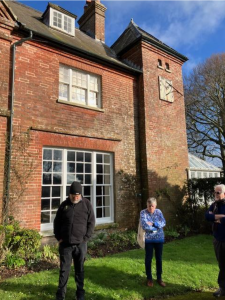
At 4pm, Mark Chutter led a guided tour of ‘Hardy’s Casterbridge’, including the former office of John Hicks, the architect, whose apprentice the teenage Hardy had been, and the grand house of the ‘Mayor of Casterbridge’ (now the Dorchester branch of Barclay’s Bank) together with the less affluent Fordington area. After a short break, most of us reassembled at 6pm in the Casterbridge Room of the now renovated King’s Arms in Dorchester High Street for a group reading of poems by both writers and by those they had influenced (including John Cowper Powys, Seamus Heaney and Bill Manhire, and also Mark Ford and Peter Robinson themselves), chosen by the readers and chaired by Peter Swaab, followed by the conference dinner.
The whole day was as one member said, ‘really fun and educational’. We were lucky with the weather that weekend, and on Sunday Feb 11th, we gathered again at Hardy’s self-designed home Max Gate on the edge of Dorchester on a morning of early spring sunshine. Our guided tour had been arranged by Mark Chutter. Max Gate was officially shut for the winter but especially opened for us. Several furniture items were covered with dust sheets – for which the volunteers apologised, but which I rather liked as the winter arrangements gave the feeling of a lived-in house rather than a museum. I took a photograph of the outside, with the sundial encircled by its strange Latin motto Quid de nocte? ‘What of the night?’, and Sarah Pattison took a better one of the front hall.

After our tour of Max Gate we went to The Sailor’s Return in East Chaldon, where we enjoyed our group pre-booked Sunday lunch. For this we needed two tables, and I found myself at the table of the Hardy Society, and greatly enjoyed meeting several members there as well as seeing old and new friends from the STW Society. Peter Swaab then led a guided tour through East Chaldon to the parish church of St Nicholas, where we admired the lovely appliqué Nativity made by Betty Muntz and the East Chaldon children, with its portraits of Chaldon animals known to the children. Sarah Pattison and I both took photographs of it, neither of which is entirely successful (we had problems with the reflections on the glass in front of it) but both give some idea of its charm.
We then went to the churchyard, and viewed the STW and VA stone with its motto non omnis moriar: ‘I shall not wholly die’.
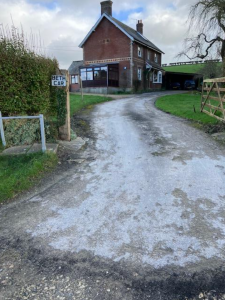
We then saw the once sinister building that’s now the red-brick Rectory, in the 1930s an orphanage in which servant girls were notoriously exploited by the Rector’s wife, arousing concern in the village and a petition organised by the writer Llewellyn Powys and signed by Sylvia Townsend Warner and Valentine Ackland. This led to a national scandal and a summons for libel in 1935, whose costs of £1000 were awarded against the three (£1000 in 1935, equivalent to £89,120 in 2024, was a vast sum especially for freelance writers – but the scandal got the orphanage closed: a victory of sorts, however expensive). Lastly we stood outside TF Powys’ house, Beth Car, designed and built by Hardy’s brother – now with a conservatory extension, but still the same red brick villa.
Then the majority of us went home; but because I was staying the Sunday night for an appointment in Dorchester on Monday, I was able to visit the marvellous Elisabeth Frink exhibition in Dorchester Museum. This is on until April 24th and I urge anyone living near enough not to miss it. Here are two items: a photo of a large print, and of her maquette for her 15-foot statue Risen Christ over the porch of Liverpool Cathedral, her last sculpture.
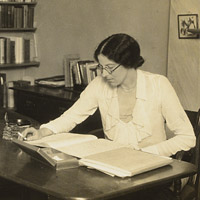
A Joint Study Weekend between the Sylvia Townsend Warner Society and the Thomas Hardy Society
From 09:30, Saturday 10th February until 17:00, Sunday 11th February 2024
At Dorchester Library, South Walks House, Charles St, DT1 1EE
Although not born in Dorset, the author and poet Sylvia Townsend Warner fell in love with the county when she visited Chaldon Herring and the surrounding area in the 1920s. The weekend will consider Hardy and Warner’s writing against the backdrop of a Wessex Landscape. Speakers will include Professor Jan Montefiore, Professor Peter Swaab and Mark Damon Chutter. 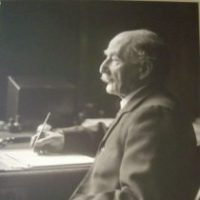
Book Tickets Here Detailed Programme Here
There will be a three-course meal (£35) served in the evening in the Casterbridge Room, King’s Arms, Dorchester. Please contact Kings Arms to book directly on 01305 234 234.